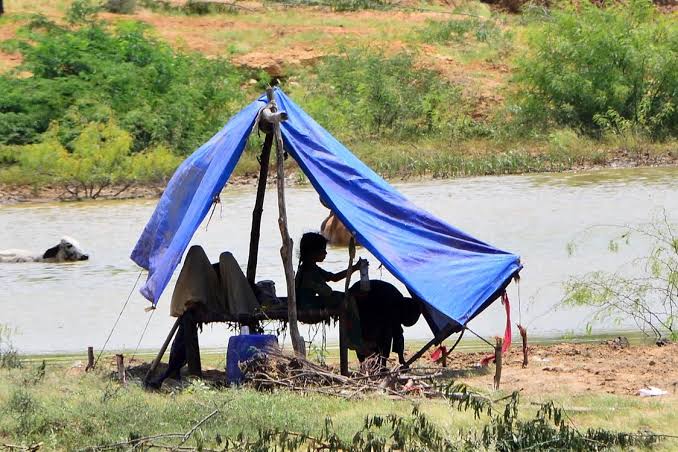Thousands of Pakistanis displaced by sweeping monsoon floods have been forced to live in temporary shelters and roadside tents for days, many reporting little or no assistance from authorities or relief agencies as they struggle for food, clean water and medical care. Survivors across Punjab and other hard-hit provinces described scorching heat, insufficient tents and dwindling supplies at relief sites.
The floods, triggered by relentless rains and swollen rivers since late June, have inundated vast tracts of farmland and villages. Authorities and media accounts say evacuations have been large-scale — with some provinces moving hundreds of thousands to higher ground — while rescue operations have been stretched thin by the scale of the emergency. In recent weeks, dozens of lives have been lost in rescue incidents, underscoring the dangers facing both residents and responders.
Humanitarian agencies and local officials say the priority needs at relief sites remain shelter, clean drinking water, sanitation and basic health services, even as stocks of emergency supplies take time to reach remote and newly flooded areas. The United Nations has allocated emergency funding to support relief efforts, but agencies warn that needs far outstrip available resources and access remains a major constraint.
On the ground, displaced families described makeshift living arrangements at school compounds, open fields and roadside encampments where sanitation is poor and temperatures rise during the day. Parents reported children with only a single set of clothes, limited food rations and no clear information on when they might be rehoused or receive rebuilding assistance. Local volunteers have helped in many districts, but survivors said official relief distribution was patchy and slow.
Government agencies say they are deploying military and civil resources for rescue and relief, including boats, helicopters and temporary camps, and that distribution of tents and rations is underway. Still, aid workers caution that coordination problems, damaged roads and the scale of displacement complicate timely delivery — and that longer-term needs such as clean-up, disease prevention and housing reconstruction will require sustained support.
Relief groups and analysts have urged faster scaling of shelter and WASH (water, sanitation and hygiene) assistance, broader cash-assistance programmes to help families rent alternative housing, and clear plans to restore livelihoods in agriculture-dependent areas. For many flood survivors, the immediate test is simply surviving the coming days in cramped, improvised shelters — a fragile pause before the far heavier task of rebuilding homes and lives begins.










